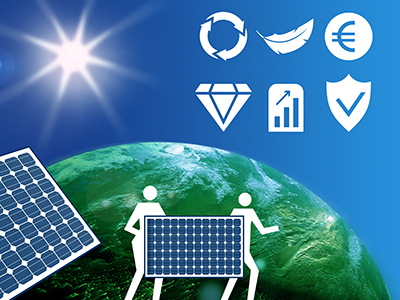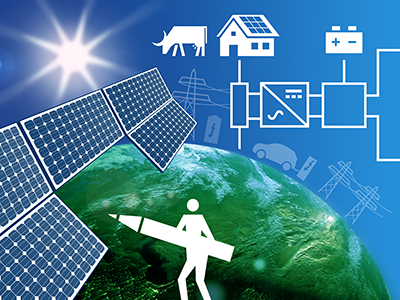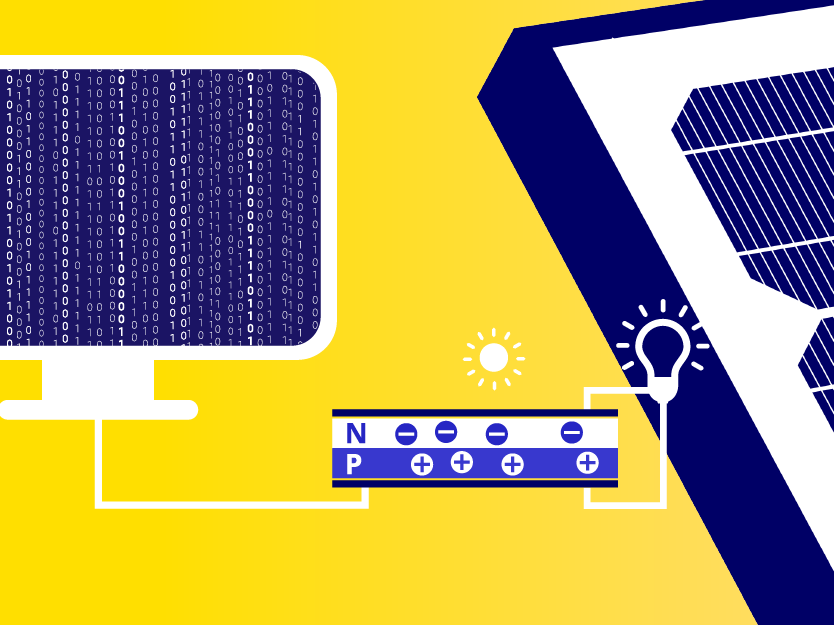Overview
Learn about the leading role of solar energy in rural electrification and climate change mitigation. Introduce yourself to the physical principle of the photovoltaic energy conversion of solar cells.
In this first course in the program Solar Energy you will be introduced to the technology that converts solar energy into electricity. The role of solar energy in both the energy transition towards a sustainable future and the improvement of the electricity access in specific regions in the world will be discussed in detail. Solar energy is the technology among all sectors with the potential to result in the largest net reduction in CO2 emissions at the lowest costs by 2030. The merits of solar energy in reference to other renewable electricity generation technologies will be analysed and we will discuss the important metrics related to performance, costs, reliability and circularity of solar energy.
You will be introduced to the solar spectrum and irradiance on earth. The physical principle of the PV energy conversion using semiconductor materials are discussed, including the light excitation of charge carriers, charge carrier transport, separation and collection. The physics of the interaction of light with matter will be covered.
The design of a solar cell is a complex interplay between the spectral utilisation, light management and electrical properties of the device. In this course you will be introduced to the optical and electrical design rules, the equivalent electrical circuit of a solar cell and parameters that determine the performance of a solar cell.
What You'll Learn
- Reflect on the role of solar energy in both the energy transition towards a sustainable future and climate change mitigation
- Reflect on the role of solar energy in rural last mile electrification
- Understand the various metrics related to performance, costs, reliability and circularity of solar energy
- Understand the physics of light and its interaction with matter
- Understand important semiconductor properties relevant for the working principles of photovoltaic energy conversion in solar cells
- Apply the opto-electrical design rules for solar cells
Details
Course Syllabus
- Week 1 - Introduction to the role of solar energy in the energy transition.
- Week 2 - Working principle of a semiconductor based solar cell.
- Week 3 - Optics for solar cells, an introduction to light management.
- Week 4 - Design rules of solar cells.
Qualifications
Chartered Engineering Competences
All our online courses and programs have been matched to the competences determined by KIVI’s Competence Structure, a common frame of reference for everyone, across all disciplines, levels and roles.
These competences apply to this course:
- A1: Extend your theoretical knowledge of new and advancing technologies.
- E3: Undertake engineering activities in a way that contributes to sustainable development and a circular economy.
Admission
This is a Massive Open Online Course (MOOC) that runs on edX.
Prerequisites
- Basic knowledge of physics is recommended.


